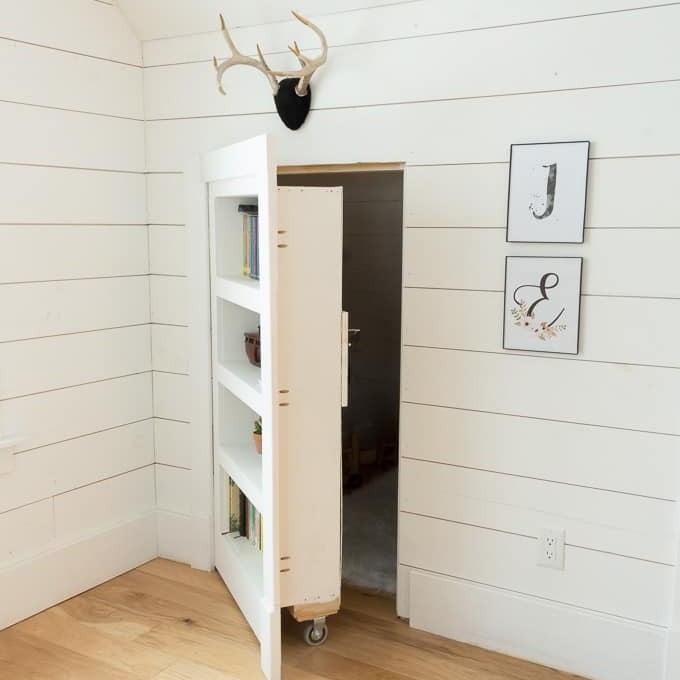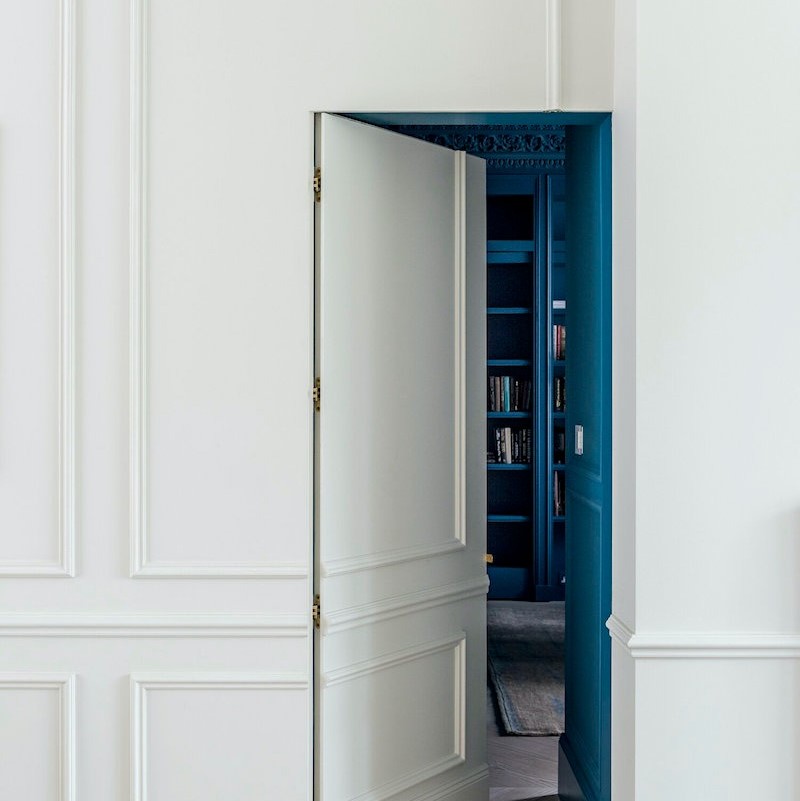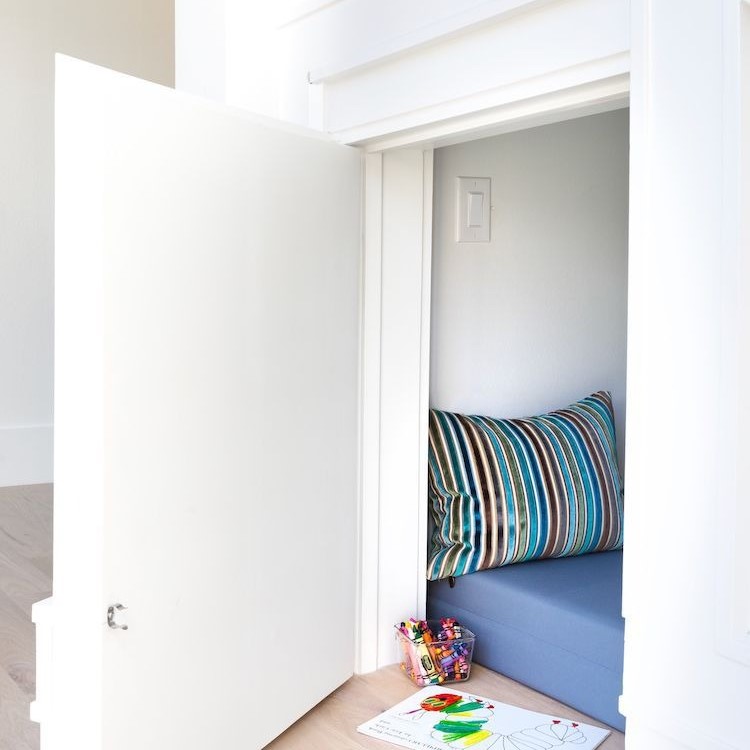Adding a secret doorway to your home can be a fun and inventive way to create hidden spaces, enhance privacy, or simply add a whimsical touch to your interiors. Whether you want a concealed bookshelf leading to a hidden room or a disguised door in your basement, learning how to make a secret doorway involves several steps and considerations that will ensure a successful project. This article will outline the essential elements to consider when creating a secret doorway, from design ideas to practical execution.
Planning Your Secret Doorway
A secret doorway can add a touch of mystery and personal security to your home. Planning is vital to make sure it blends seamlessly with your living space. Here’s what you need to consider when making a secret doorway.
First, ponder the purpose of your secret doorway. Will it conceal a safe room, a personal office, or perhaps a hidden library? Your doorway’s function will drive much of the planning process.
Next, sketch out a basic design concept. Consider the aesthetics of the room where the secret doorway will exist. How can you best camouflage it? Perhaps you can use a bookcase, a piece of artwork, or even a mirror to maintain the room’s overall look while hiding the entrance.
Also, think about the doorway’s activation mechanism. Do you prefer a traditional lever disguised as a book? Or would a more high-tech solution like a hidden keypad fit your taste and budget?
Moreover, consider the traffic flow of the area. A secret doorway shouldn’t disrupt the home’s regular pathways. It should be discreet but also easily accessible when needed. This might require some clever architectural changes.
Lastly, take privacy and accessibility into consideration. You may want certain family members or guests to know about and use the secret doorway, while keeping it concealed from others. Plan how you’ll communicate this special feature to others in your household.
Remember, patience and thorough planning are your friends. With the right design and preparation, you can create an impressive and functional hidden space in your home. To ensure success in your secret doorway project, follow these planning steps closely and infuse creativity wherever possible.
Selecting the Perfect Location

Finding the right spot for your secret doorway is crucial. It sets the stage for the entire project. Here are key factors to consider:
- Room Functionality: Choose a location that makes sense for the room’s use. A hidden door behind a bookshelf may fit perfectly in an office or study.
- Wall Structure: Inspect the walls. You need a spot that can support alterations without affecting the house’s integrity. Avoid load-bearing walls if possible.
- Visibility: Think stealth. The best locations are often overlooked by visitors. Corners or behind furniture are prime spots.
- Access: Make sure the location offers easy access when needed. You don’t want your hidden door to become a hassle.
- Space Requirements: Ensure there’s enough room on both sides of the secret doorway. This is vital for the door’s swing and for room to maneuver.
- Integration: Your secret doorway should integrate seamlessly with its surroundings. The location should allow for a natural look that doesn’t draw attention.
Selecting the perfect location requires balance. Keep functionality, structure, and stealth in mind. With careful consideration, you can find the ideal spot for your secret doorway that matches how to make a secret doorway with seamless design and functionality.
Designing the Door to Blend In
Creating a secret doorway that blends into your home’s design is essential. This design stage will determine how well your doorway hides in plain sight. Here’s how to do it:
- Mimic Surrounding Elements: Look at the room’s existing features such as bookshelves, panels, or artworks. Your door should mimic these elements.
- Consistent Style: Keep the door style consistent with the rest of your home decor. If your home is modern, a sleek, hidden panel works well. For classic homes, a bookcase could be ideal.
- Match Materials: Use the same materials as those in the rest of the room for your doorway. This could mean matching wood grain, paint color, or even wallpaper patterns.
- Clever Camouflage: Small details matter. Use similar hardware or decorative features to those found in the space. This can be handles, molding, or even fake book spines.
- Functional Decor: If your secret door is a bookshelf, make sure it holds real books. If it’s wall art, choose a piece you would naturally display.
- Door Swing: Plan the door swing so it doesn’t look out of place. Consider pocket doors or sliding mechanisms if the space is tight.
By focusing on these key aspects, you can design a doorway that fits right into your home’s aesthetic. With attention to detail, visitors will be none the wiser to the secrets that lie behind your seamless design.
Choosing the Right Materials

The materials you choose will affect both the look and durability of your secret doorway. Use high-quality materials in line with your home’s aesthetic. Here are key considerations:
- Strength and Stability: Pick materials that are strong enough to hold the doorway’s structure. Hardwoods, MDF, or steel frames often work.
- Visual Match: Ensure the materials visually align with the room. If the room has oak finishes, an oak veneer may be a great match. For a painted surface, match the exact color and texture.
- Durability: Consider wear and tear. Choose materials that can handle the secret doorway’s frequent usage.
- Weight: Keep in mind the weight of the materials. Heavier materials may require special supports or hinges.
- Soundproofing: If privacy is key, materials with soundproofing qualities add an extra layer of secrecy.
- Cost: Balance quality with your budget. Sometimes, less expensive materials can still offer a sturdy and covert build.
Selecting the right materials is a step you cannot overlook in learning how to make a secret doorway. With the appropriate choices, you can ensure that your doorway stands the test of time while remaining a well-kept secret.
Detailed Steps for Construction
Once you’ve selected the perfect spot and materials, it’s time to dive into the construction of your secret doorway. Here’s a step-by-step guide to help you create your hidden entry with ease.
- Prepare the Area: Clear the space where the doorway will go. Remove any existing fixtures or obstructions.
- Frame the Doorway: Based on your design, construct a frame that will hold the secret door. Ensure it’s level and securely attached to the surrounding structure.
- Install the Door: Hang the door onto the frame using hinges. Check that it swings or slides smoothly without issue.
- Add the Surface: Attach your chosen materials to the door. This could be wood panels, bookshelves, or artwork. Make sure it matches the rest of the room.
- Install Camouflage: If your door mimics a bookshelf, add books and ornaments. For a panel or art piece, ensure it fits naturally with the wall.
- Test the Access: Open and close the door several times to ensure it works properly. Adjust if there’s any sticking or visible gaps.
- Refine Movement: If necessary, install door stops, soft-close hinges, or guides for sliding doors, to enhance movement and functionality.
By following these construction steps, your secret doorway will take shape before your eyes. Keep your work precise and ensure everything is well-aligned for a truly undetectable secret entrance.
Installing Mechanisms for Concealment
After designing your secret doorway, choosing the right materials, and constructing it, you must focus on the concealment mechanisms. These are vital to maintain the secrecy and functionality of your doorway. Here are the key steps to ensure your secret doorway remains hidden in plain sight:
- Choose a Disguise: Your concealment mechanism should match the room’s decor. For a bookcase door, select faux books or real ones to complete the look.
- Select a Trigger: Decide on how the door will open. Will it be a disguised lever, a pressure point on a bookshelf, or an electronic system? Keep it simple and intuitive.
- Installation: Carefully install the chosen mechanism. This might involve intricate woodworking, electrical setup, or both.
- Test the Mechanism: Once installed, test your mechanism multiple times. Ensure it opens and closes smoothly and remains well-concealed.
- Security Features: If you opt for electronic devices, secure them against hacking. Use encrypted technology or backup manual options for safety.
By carefully installing and testing your concealment mechanisms, you can learn how to make a secret doorway that not only looks seamless but operates flawlessly as well. Patience and precision in this phase are key to a successful hidden door that surprises and delights whenever revealed.
Finishing Touches: Making it Undetectable

The final stage in how to make a secret doorway is applying the finishing touches that ensure it remains invisible to the untrained eye. After your secret doorway is built and functional, you must meticulously camouflage it to make sure it blends into its environment perfectly. Here are the steps to polish your secret doorway:
- Paint and Texture Matching: Apply paint or texture that matches the surrounding walls precisely. Be thorough, leaving no color discrepancies.
- Trim and Molding: Add any trim or molding that exists in the rest of the room to the doorway. This continuity in design details is crucial.
- Adjust Lighting: Lighting can reveal subtle differences. Adjust room lighting so it does not cast shadows or highlights that could expose the door.
- Regular Maintenance: Check for signs of wear or accidental reveals. Oil hinges and adjust the bookshelf or panel as needed to keep the doorway concealed.
- Practice Discretion: Limit who knows about the doorway. The fewer people aware, the better it is for maintaining its secrecy.
Taking care to address each of these final aspects will make your secret doorway undetectable. Your visitors will be none the wiser, and you’ll enjoy the added mystery and security that comes with your hidden space.
Safety and Security Considerations
When adding a secret doorway to your home, safety and security cannot be an afterthought. It’s essential to balance the concealed nature of the doorway with the ability to comply with building codes and maintain a safe environment. Here’s how you can achieve this:
- Compliance with Building Codes: Ensure that all construction is up to code. This includes proper framing, use of fire-resistant materials, and installation of a means of egress.
- Structural Integrity: Check that the secret door and its mechanisms don’t compromise the structural integrity of your home. Use materials and supports that can bear the weight and stress.
- Emergency Access: In case of an emergency, there should be a way to open the door quickly. Whether it’s a hidden release or a fail-safe mechanism, prioritize accessibility.
- Locking Mechanisms: If security is a concern, invest in high-quality locks. However, make sure they are also discreet to keep the door’s secrecy.
- Professional Inspection: Consider having a building inspector or a professional contractor review your plans and finished doorway. They can offer advice and ensure everything is safe and secure.
- Electronic Security: For high-tech solutions, use secure and encrypted technology to protect against hacking or unauthorized access.
By focusing on these safety and security considerations when learning how to make a secret doorway, you can ensure your hidden passage is both a magical feature of your home and a responsible addition that keeps everyone safe.

